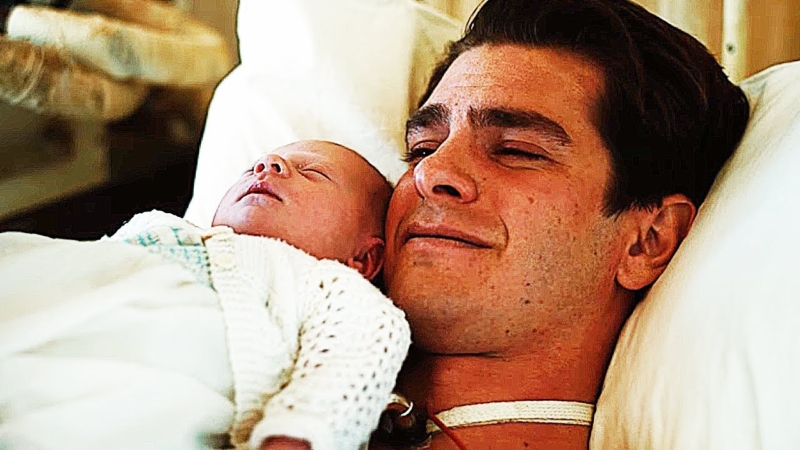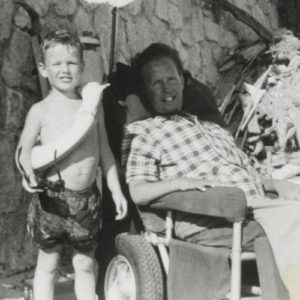The Movie Breathe Brought Back Memories of Using a Vent

Have you seen the movie, Breathe? This true story centers around the life of Robin Cavendish, a British man who contracted polio at age 28. The year is 1958. He is married, with a child on the way. The movie tracks his life and experience being on a ventilator at a time when people in such circumstances were either considered destined for imminent death or kept away in a medical institution for the rest of their lives.
Breaking all norms, Cavendish, with the assistance of his wife and friends, leaves the hospital and lives independently at home, where his wife does his care. His best friend, an engineer, designs a wheelchair that can hold the ventilator. Cavendish designs a modified van and tours, first around Britain and then around the world, advocating that individuals on ventilators should be out in society and not hidden in institutions. His life is a story of bravery, advocacy, independence, and success. When he died in 1993, he left a legacy of innovation that has helped millions of individuals with severe disabilities.
The Never-Ending Whoosh of the Vent
I could relate to the movie because I temporarily used a ventilator after sustaining a spinal cord injury at the cervical level in 1983. That led to breathing on my own through a trach collar. I don’t remember much about being on a vent at that time. But eight years ago, I went to the Shepherd Center in Atlanta for surgery on severe pressure sores and had medical complications. I wound up in ICU on a ventilator. I was incredibly sick and there was not a lot of hope that I would survive because of the severity of my pulmonary status. I could not speak. Trying to use my eyes and mouth to spell out words on a letter board was incredibly frustrating both for me and the individual I tried to interact with. Thoughts in my mind that went around and round and not being able to vocalize those thoughts was depressing.

I was scared, sad, and felt helpless. The one constant was the sound of the ventilator: the never-ending whooshing and the loud alarm that goes off when there was any disconnection.
An alarm did not exist for Cavendish. There is a scene in the movie where the ventilator is inadvertently unplugged by a dog running by and Cavendish almost dies. I didn’t need to worry about a dog unplugging the ventilator as I was in ICU, but whenever there was a problem and the alarm went off, I was petrified I wouldn’t be able to breathe.
We Take Breathing for Granted
Each day most of us breathe without noticing. We never think about it as the key to our existence. When you lose the ability to breathe on your own, you live in a world feeling scared and vulnerable each day. Whenever I felt like I was unable to breathe, I would freak out and wonder if that would be my last breath. Because my breathing was so compromised, the focus on the ventilator as my life source became primary.
I was on the ventilator for four months when the respiratory team advised that I should try to wean off. I have never done anything so difficult in my entire life. They started me at just 30 minutes. It felt like hours. I was exhausted and scared that I wouldn’t make it. I tried to distract myself, but I became obsessed with every single breath and couldn’t wait to get the machine back on. Day after day we added time but it was still difficult and scary. The sound of the ventilator became my friend and when I didn’t hear it working the silence was deafening. I couldn’t wait to get the ventilator back on. Progress became my enemy instead of my friend. I did not believe that I could do it.
I became incredibly depressed, convinced that I would stop breathing and die. My husband, friends and family were aware of how I felt. But I couldn’t give up. The love and support of others kept me going. The same thing happened to Cavendish. Right after he contracted polio and was put on a ventilator, he didn’t want to live. But his wife, young son and friends never left his side and he finally realized that he could have joy in his life.
Finally, Beautiful Silence
After a few weeks, my time off of the ventilator exceeded the time on the ventilator. I was advised that I would need to do a test. If I could stay off the ventilator for 24 hours, we would do another test. If that succeeded, I could move from the ventilator to just a trach. Watched by the respiratory team, I succeeded in the first 24- hour test. It required a degree of mental toughness that I didn’t realize I had. We then did the second test and I “passed.” I could have just the trach with oxygen. I was strong enough to breathe without the ventilator.
The sound was gone. The silence permeated the room. And the wildest thing happened. The silence was beautiful. Not having the constant whooshing in and out was comforting instead of discomforting. It was like a switch was flipped.
My personal experience along with the movie made me incredibly sensitive and proud of those with disabilities who live on a ventilator. I know how difficult it is. I know what tenacity it requires to move around, to go out in the world and travel with a device that can easily malfunction. Even though ventilators are much more technically advanced than they were in 1958, there are still many things that can go wrong. It takes significant effort to push past that.
Most importantly, I never take for granted the ability to breathe. The silent inhale and exhale. The ability to do it on my own without assistance. That sound of silence. Nobody should take it for granted.

